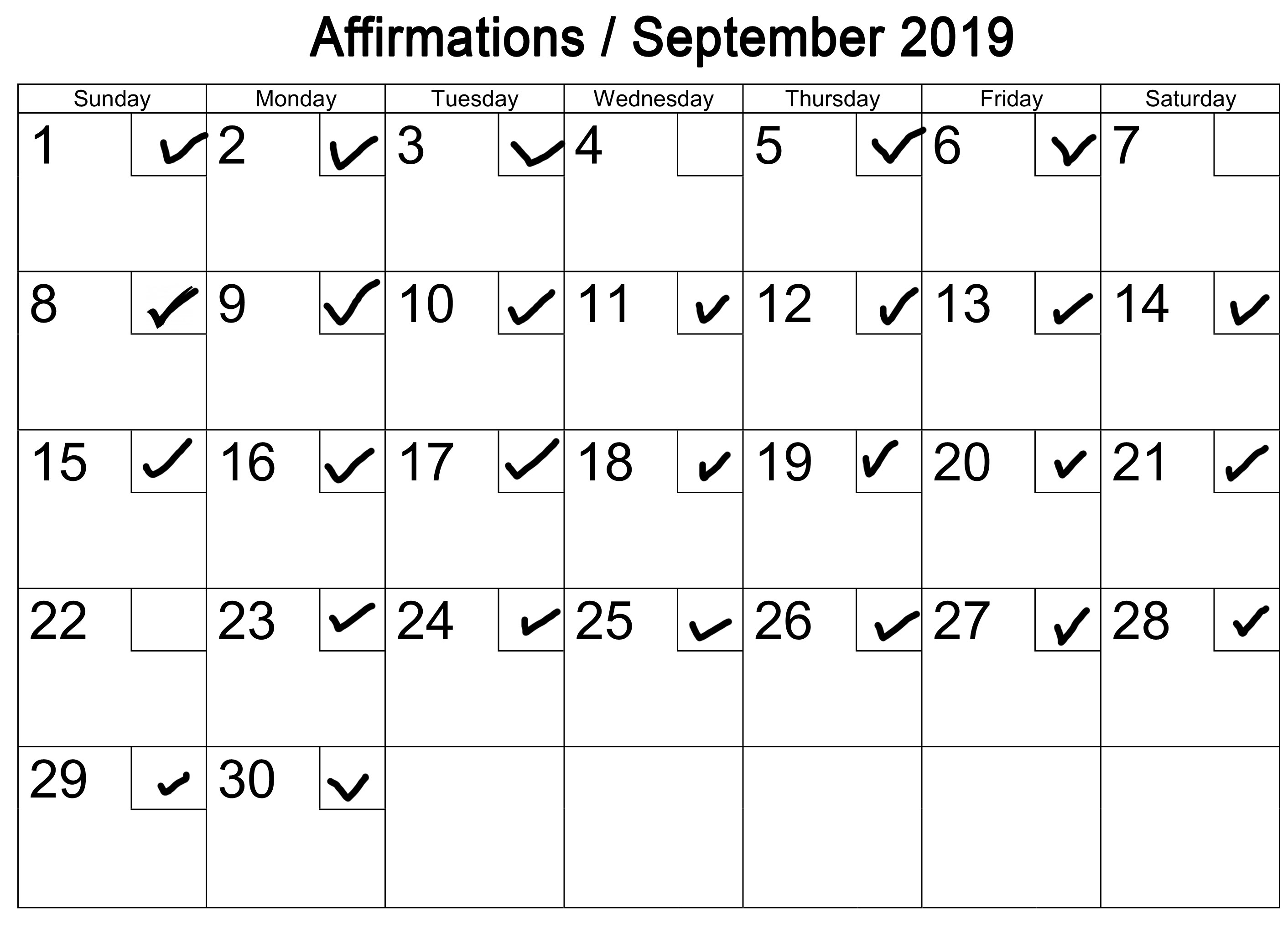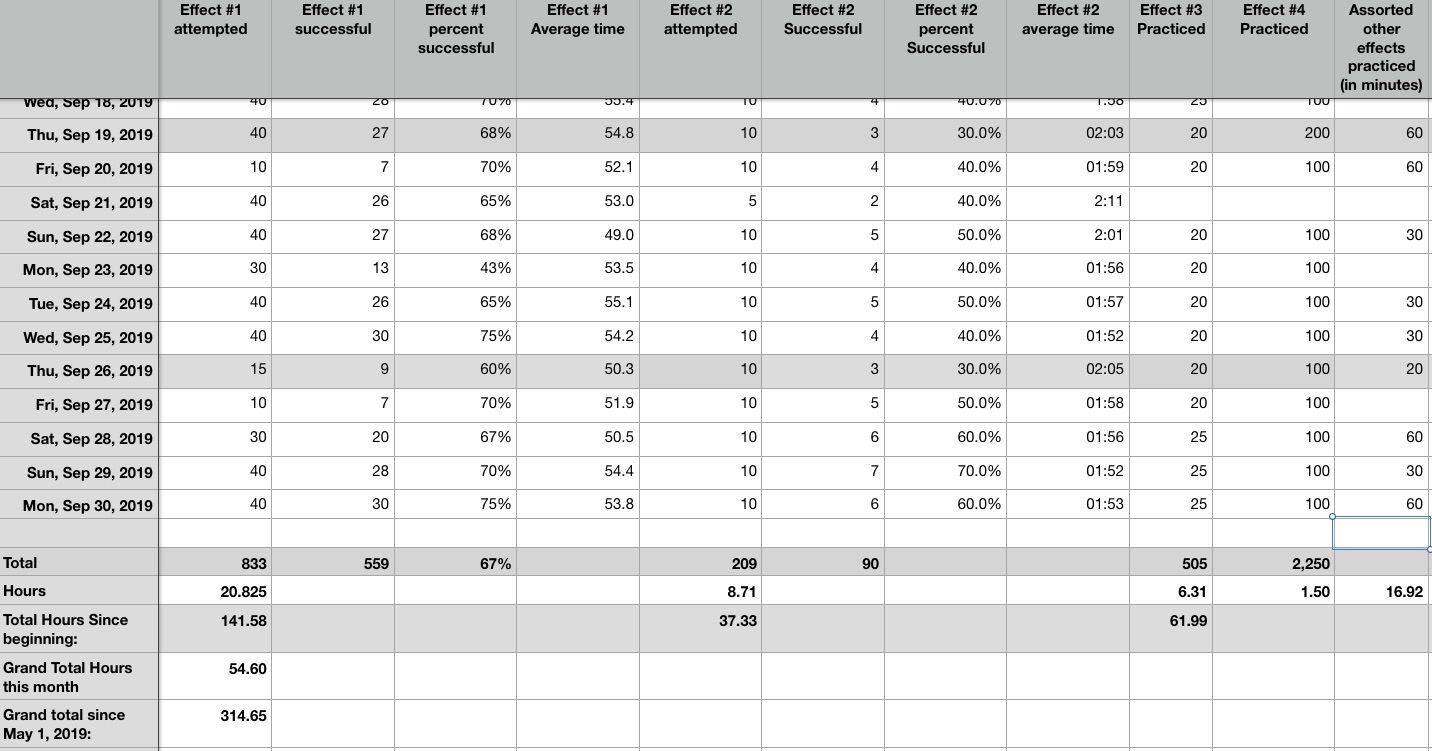In a recent blog post we covered micro-measurements – ways to record reps, pieces or work, etc. Usually we keep records of how many of them we’ve done in a day or an hour, or some short timespan like that with micro-measurements.
Macro-measurements keep track of those small increments over time. For example, if you intended to practice a certain piano etude 10 times a day for three months you could macro-measure it. Or if you wanted to keep track of how many free-throws you made out of how many you attempted over a period of weeks or months. Or if you wanted to keep track of how many hours you spent in your studio painting without interruption each day for a period of time.
Let’s say you intended to say your affirmations* three times daily. You could simply make a chart with the days of the week and a check-box next to each. Each time you completed three affirmations a day, you’d put a check in that day’s box. Simpler still would be to use a calendar, and check each day you did your affirmations.

Of course, an analog way seems a bit quaint. So the next step would be to make a spreadsheet of the days in a month, and make columns next to those, and label each column something you’d like to do each day.
If you’re half-way spread sheet savvy, you could also add the amounts (in actual times that you did it, or the time you spentdoing it) in rows below the dates. You could also keep track of monthly amounts in a row below that. Make a new sheet within the same spreadsheet for each month, and you can track you track your monthly progress.
An example of this kind of spreadsheet is shown in the image in the header of this post. It’s a macro-measurement of the time and effectiveness of my magic practice sessions. I use Apple’s “Numbers” for my spreadsheet. Most folks use Excel, I imagine. You can use free google spreadsheets online.
Naturally, if you want to keep macro-measurements for anything, there is an app for that.
A simple-to use and very effective habit-tracking app is “Productive – Habit Tracker” for the iPhone. I’m sure every platform has something similar.
I’ve been using “Productive – Habit Tracker” for the past month, and I can say that I don’t think anything has helped me keep on track with my daily tasks like this app. It’s been a great tool. It’s what got me to sit down and write this post today. You can try it for free for the first week, after that it’s a reasonable $19.99 per year. (BTW, I do not get an affiliate commission or anything for suggesting this app.)
If you need help thinking of a way to keep track of your progress on something, let me know in a comment. Better yet, if you have a favorite method that has helped you, please let us all know in a comment.
* If you don’t know what affirmations are, you are missing out on a seriously powerful way to get things done. Lately they smack of new-age woo-woo because of all the hucksters selling “their methods” of affirmations, and making all kinds of false magical claims about what they can do.
The original text on affirmations is still the best. It’s in Napoleon Hill’s classic book, Think and Grow Rich (you can get it for about three bucks here: Think and Grow Rich .) A nice touch to his take on affirmations is that it doesn’t have to be about making money. Riches are whatever you consider makes you a better person. So you can do affirmations about how many chin-ups you will do a day, or how many letters to friends you will write, or whatever. I’m sure you get the picture.
All of this was based on Émile Coués seminal work, in which he introduced the autosuggestion, “Every day in every way, I’m getting better and better.”
